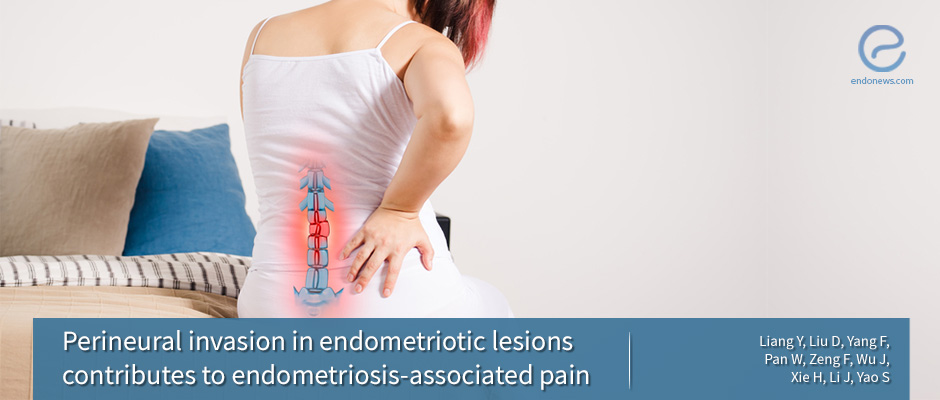The pain and its severity in deeply infiltrating endometriosis patients
Nov 30, 2018
Understanding the interaction of perineural invasion and the peritoneal endometriosis can contribute the treatment of pelvic pain in DIE.
Key Points
Highlight:
- Endometriosis-associated pain seems to be the result of perineural invasion in endometriosis-associated pain, produced by a mechanism named “neuroangiogenesis”.
Importance:
- The present study suggests that the perineural involvement of endometriosis is an important and frequent phenomenon in deeply infiltrating endometriosis and it is closely associated with endometriosis-associated pain.
What's done here?
- Authors planned a study to examine the relation between perineural invasion and deeply infiltrating endometriosis (DIE) regarding pelvic pain severity in sixty-four histologically confirmed endometriotic patients.
- The percentage of perineural endometriosis, the density of newly formed nerve fibers and microvessels were examined and the correlation with the severity of pain was explored.
- The self-reporting pain assessed by the severity of dysmenorrhea, dyspareunia, and chronic pelvic pain before surgery were evaluated by VAS scores for the recent 6 months.
- Intact nerve fibers were identified by immunohistochemistry and double immunofluorescence was used to demonstrate the relation between microvessels and the nerve fibers.
Key Results:
- The newly formed nerve fibers were markedly increased in the patients with perineural endometriosis. Microvessel density was also significantly higher in this group.
- The pain scores of dysmenorrhea, dyspareunia, and chronic pelvic pain were all significantly higher in the patients with perineural invasion, compared to those without.
Lay Summary
Liang et al. from the Department of Obstetrics and Gynecology of the First Affiliated Hospital of Sun Yat-sen University, China, recently published an interesting paper in the Journal of Pain Research, a prospective study to reveal the relationship between neurogenesis and other potential factors for pain and its severity in deeply infiltrating endometriosis.
Sixty-four deeply infiltrating endometriosis patients were involved in this study, which the endometriotic nodules of them were resected from uterosacral ligaments and/or rectovaginal septum laparoscopically. Before the evaluation, patients were divided into two groups for the presence of histological perineural endometriosis.
Immunochemistry and dual immunofluorescence were used to search perineural invasion of endometriosis and the number of microvessels in endometriotic tissues.
Perineural presence of endometriosis was common in deep infiltrating endometriosis. The pain scores of dysmenorrhea, dyspareunia, and chronic pelvic pain were higher in the patients with positive perineural endometriosis, also the density of newly formed nerve fibers and microvessels were significantly increased in this group. The density of newly formed nerve fibers and microvessels were significantly correlated.
The findings of this study suggest that the perineural presence of endometriosis is frequent in deeply infiltrating endometriosis and closely associated with endometriosis-associated pain including dysmenorrhea, dyspareunia, and chronic pelvic pain.
Research Source: https://www.ncbi.nlm.nih.gov/pubmed/30310304
deeply infiltrated endometriosis uterosacral endometriosis rectovaginal endometriosis dysmenorhhea dyspareunia chronic pelvic pain immunochemistry double immunoassay neurogenesis

